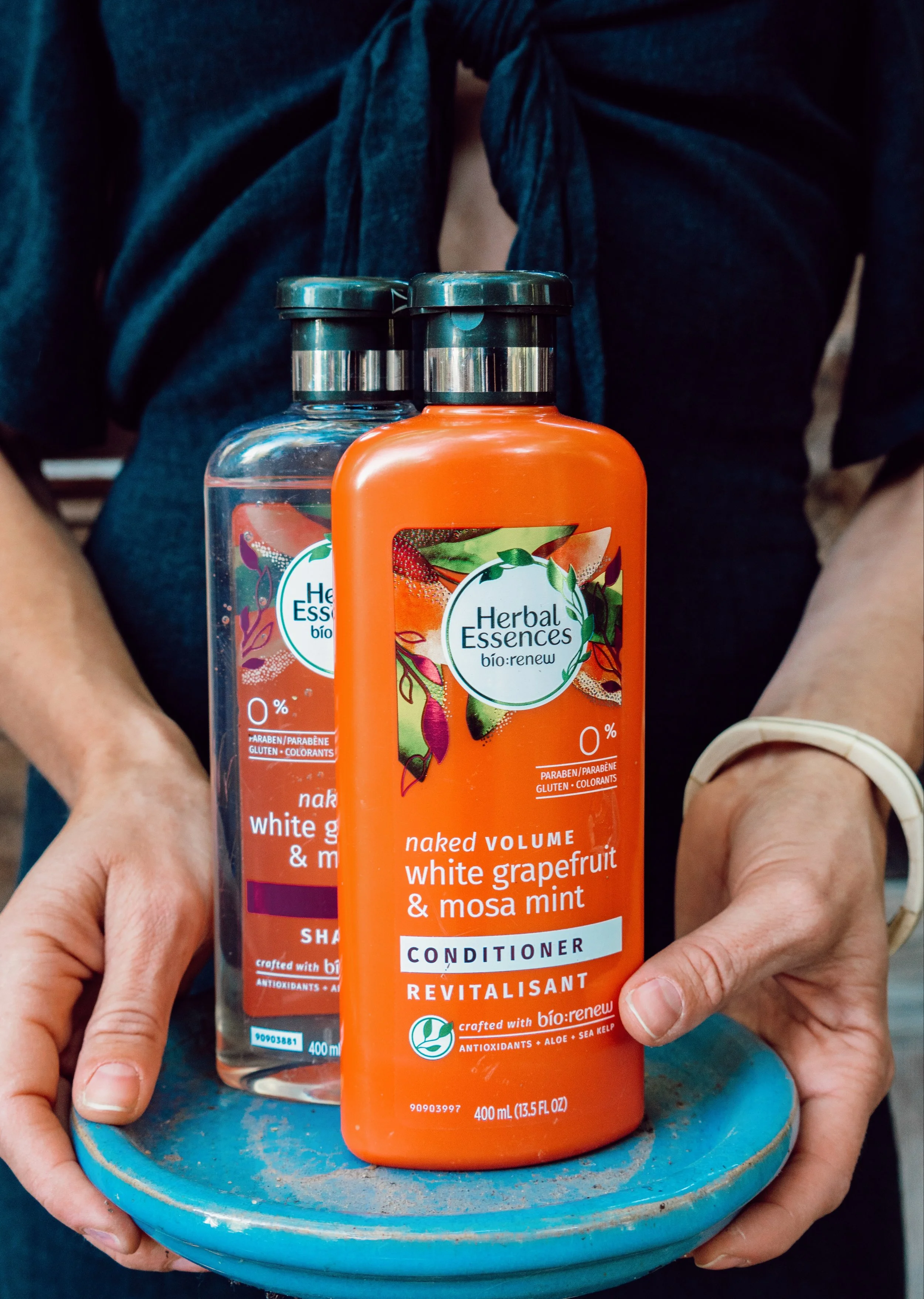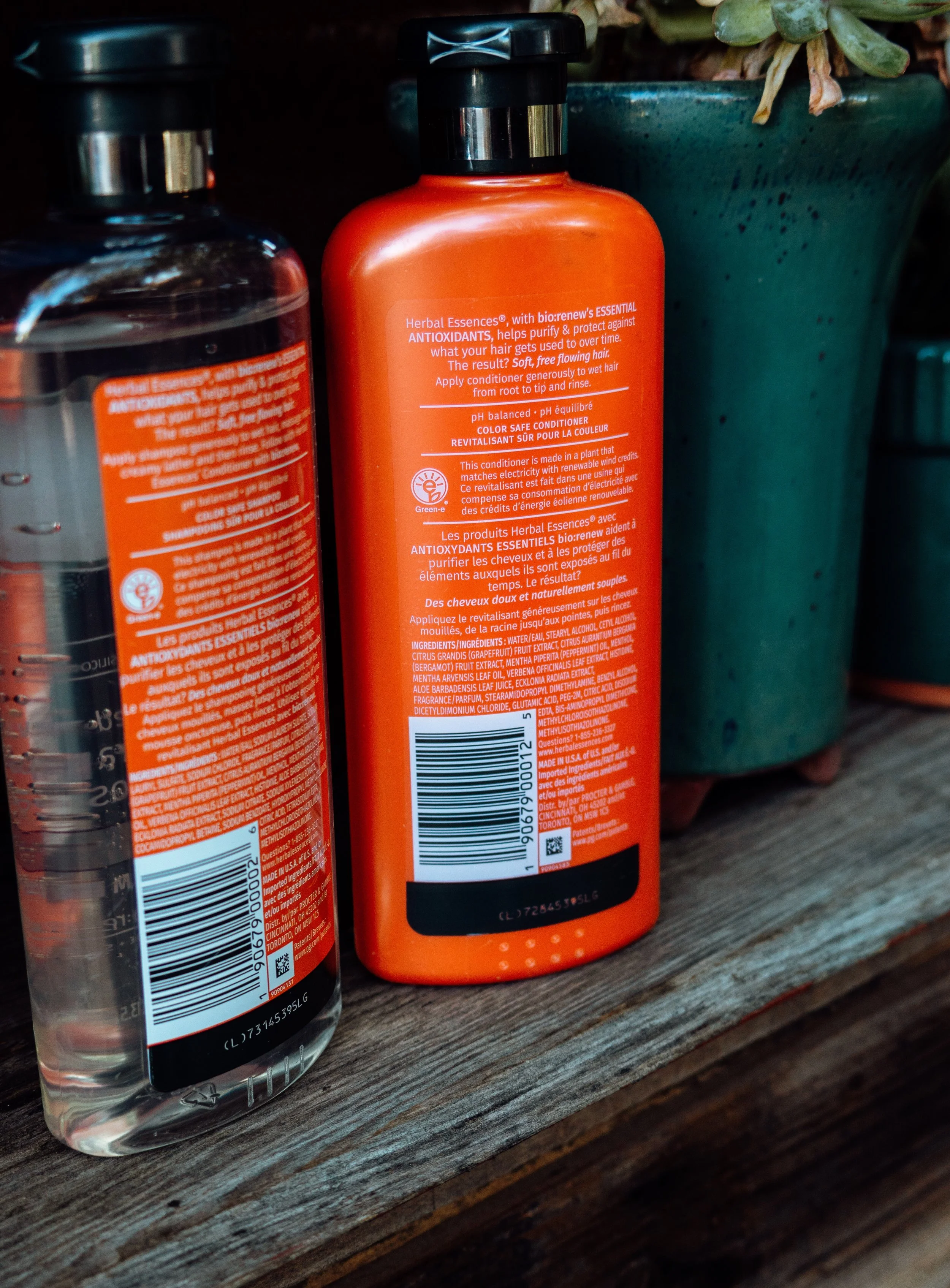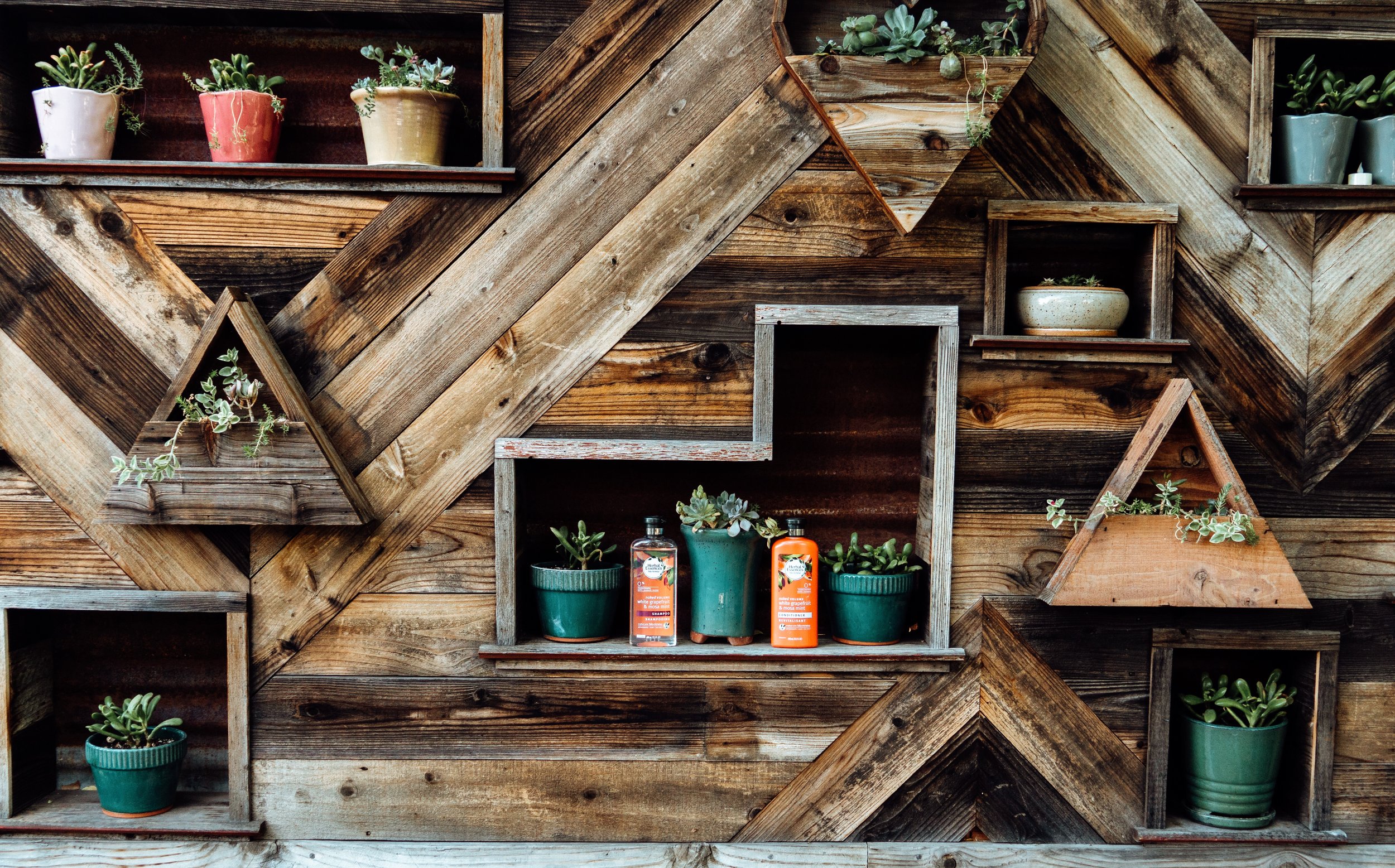This content is sponsored by Herbal Essences — all opinions are my own.
My Story: The Diagnosis
I was 22 years old when I found out I was going blind.
It started as a joke. One day while driving in his car, my boyfriend at the time noticed I had really poor peripheral vision. We used to laugh about it… he’d hold things up on either side of my head, and we’d show friends how I couldn’t see them. I thought it was nothing more than a quirk — like having crooked teeth or freckles or a dry sense of humor. I certainly didn’t think there was anything wrong, until one day in a routine eye exam, an optometrist told me I had the worst peripheral vision of anyone she’d encountered. I was referred to an ophthalmologist, who told me my pigment was clumping. An art student at the time, ‘pigment’ meant the colorful stuff I slapped on my canvasses. I asked the doctor what he meant, and he curtly replied, “Well, the pigment in your eye. It’s clumping.” No further explanation was offered, and I had no idea what he meant. I was referred to a retinal specialist in San Francisco, who was so booked out I didn’t get an appointment until four months later.
When I finally met Dr. Duncan of UCSF, I learned I probably had an incredibly rare degenerative eye condition called retinitis pigmentosa, but it would be months of testing before my formal diagnosis came through in 2010: I did indeed have RP, as it’s more commonly referred to. There was no treatment, no cure, and seemingly no hope. Perhaps an even more difficult pill to swallow: giving up driving. While I technically wasn’t legally blind yet (and am still not today), my parents and doctor agreed it was not safe for me to be on the roads.
And just like that, I went from a young, independent woman pursuing a career in visual arts, to a visually impaired bus passenger.
All I thought about was my future: what kind of career could I pursue without vision (art seemed out of the question), how was I going to get around, and most importantly, would I ever be healed? I was launched into a strange, lonely world full of questions and little answers.
Of course, what doesn’t kill you makes you stronger — in fact, in many ways, my visual impairment has been the very thing that’s propelled me to push and fight harder than I otherwise would have. I don’t take a single day for granted. But admittedly, it hasn’t been an easy journey.
Retinitis Pigmentosa
RP is difficult to explain. The disease, which is a genetic mutation that sometimes runs in families (although not mine), is present in the retina, or the backside layer of the eye: the part that’s responsible for converting light into electrical impulses that travel along the optic nerve and connect to the brain, resulting in what we call seeing. My retinas are dying, slowly, from the outside in. While normally sighted people have approximately 180 degrees of vision from side-to-side and top-to-down, I’ve regressed to less than 40 degrees all the way around. So, while my central vision is excellent, my peripheral vision is all but gone. I still have enough vision to function for the most part on the day-to-day… I can hike, watch movies, read, shoot photos, walk through airports, and so much more unassisted by a cane. But, I can’t see high fives or handshakes. I’ve stepped on more dogs and babies than I care to admit. I have scars all over my body from bumping into things that were out of my peripherary. My night vision is also pretty awful — I’m at the point where I can’t walk by myself at night without assistance. There are other, smaller side effects, but these are the symptoms that impact my life in the most obvious ways.
It’s worth pointing out that you can’t necessarily tell I’m visually impaired upon interacting with me. Sometimes even my closest friends and family members forget I have RP. I’ve gotten really good at scanning, being aware of my environment, situating myself in restaurants or other crowded places where I have the best visibility, and relying on my hearing to know what’s going on around me. I also live an incredibly active lifestyle: biking, acting in theatre, snowboarding and trail running are a few of my favorite activities, although admittedly I do need to go rather slow and approach each with a bit of caution. Sometimes even I forget that I don’t have “normal” vision!
Hope for the Future
The good news (yes there’s good news!) is this: it’s highly unlikely I will ever go completely blind. Even in the eight years since my diagnosis, incredible advances have been made in the field of degenerative retinal conditions in genetic testing, the prosthetic retina, and stem cell research. I’ve been fortunate enough to even participate in a clinical trial at UCSF, hosted by my ophthalmologist. While regaining lost vision is less likely, I am confident I will be able to see the faces of my grandchildren someday… which I’m unspeakably grateful for. There are others out there with symptoms worse than mine, whose lives are far more impacted, who don’t live in places with dependable healthcare.
Today is World Sight Day — an incredibly important day to me, as I celebrate the advances being made here in the US and around the world in vision care, as well as increased awareness and funding around conditions like mine. I love that in today’s day and age, more and more brands are focused on radical inclusion, and making subtle changes in their products that make them easier for disabled individuals to use. One such brand is Herbal Essences.
Radically Inclusive
Today, Herbal Essences announced new shampoo and conditioner bottles for their bio: renew collections that are friendlier for the visually impaired. As you might imagine, since most shower products feel exactly the same, as a blind person, it can be difficult to distinguish which is which: these new shampoo bottles have raised stripe etchings on the back, and conditioner bottles have raised circle etchings. These subtle differences, hardly noticeable to the everyday consumer, can make a world of difference in the day-to-day routines for the blind and visually impaired… or even just those who can’t see very well in the shower without their glasses or contacts!
Herbal Essences partnered with their Special Consultant for Inclusive Design, Sumaira “Sam” Latif, who has been with the company for over 18 years and is herself blind due to retinitis pigmentosa, the same condition I have. Her unique perspective lit the spark for the idea, which was refined by working with a focus group of visually impaired consumers, representing the 253 million people worldwide — 23 million of whom live in the US — who face challenges associated with vision impairment every day.
“Imagine the daily challenges, like getting dressed in the morning or simply taking a shower after a long day. You don’t really know which bottle the shampoo, conditioner, or soap is… you have to get creative. I used to put an elastic band around shampoo or sellotape on conditioner to remind me,” says Latif, speaking from personal experience. And as it relates to the bottle design, she says the intention was clear: “It was important that we invent a universally recognizable tactile feature. Less than 10% of blind people actually know Braille.”
Thank you to Herbal Essences for partnering with me on this blog post, and more importantly, thank you so much for recognizing the importance of creating products with accessibility for everyone. Speaking from someone who struggles with the lifelong implications of having an incurable disease that most people have never heard of, it’s refreshing to see space being made in our world today for people like me.
Learn more about Herbal Essences’ radically inclusive new packaging here and keep a look out for them in January 2019 when they hit shelves.









